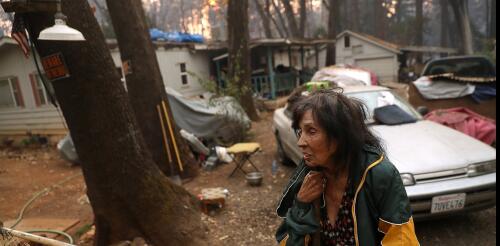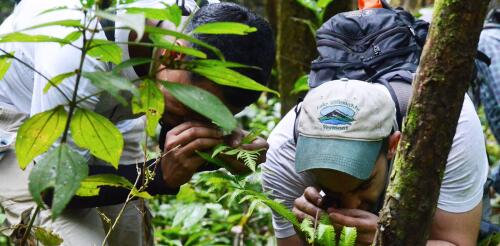environment
Director Martin Scorsese’s new movie, “Killers of the Flower Moon,” tells the true story of a string of murders on the Osage Nation’s land in Oklahoma in the 1920s. Based on David Grann’s meticulously researched 2017 book, the movie delves into racial and family dynamics that rocked Oklahoma to the core when oil was discovered on Osage lands. White settlers targeted members of the Osage Nation to steal their land and the riches beneath it. But from a historical perspective, this crime is just the tip of the iceberg. From the early 1800s through the 1930s, official U.S. policy displaced thousands of Native Americans from their ancestral homes through the policy known as Indian removal. And throughout the 20th century, the federal government collected billions of dollars from sales or leases of natural resources like timber, oil and gas on Indian lands, which it was supposed to disburse to the land’s owners. But it failed to account for these t...
In today’s electronic age, rechargeable lithium-ion batteries are ubiquitous. Compared with the lead-acid versions that have dominated the battery market for decades, lithium-ion batteries can charge faster and store more energy for the same amount of weight. These devices make our electronic gadgets and electric cars lighter and longer-lasting – but they also have disadvantages. They contain a lot of energy, and if they catch fire, they burn until all of that stored energy is released. A sudden release of huge amounts of energy can lead to explosions that threaten lives and property. As scientists who study energy generation, storage and conversion, and automotive engineering, we have a strong interest in the development of batteries that are energy-dense and safe. And we see encouraging signs that battery manufacturers are making progress toward solving this significant technical problem. Avoiding overcharging is one way to reduce the ris...
Flesh-eating bacteria sounds like the premise of a bad horror movie, but it’s a growing – and potentially fatal – threat to people. In September 2023, the Centers for Disease Control and Prevention issued a health advisory alerting doctors and public health officials of an increase in flesh-eating bacteria cases that can cause serious wound infections. I’m a professor at the Indiana University School of Medicine, where my laboratory studies microbiology and infectious disease. Here’s why the CDC is so concerned about this deadly infection – and ways to avoid contracting it. What does ‘flesh-eating’ mean? There are several types of bacteria that can infect open wounds and cause a rare condition called necrotizing fasciitis. These bacteria do not merely damage the surface of the skin – they release toxins that destroy the underlying tissue, including muscles, nerves and blood vessels. Once the bacteria reach the bloodstream,...
As wildfires burn across the Western U.S., the people in harm’s way are increasingly those least able to protect their homes from fire risks, evacuate safely or recover after a fire. In a new study, we and a team of fellow wildfire scientists examined who lived within the perimeters of wildfires over the past two decades in Washington, Oregon and California – home to about 90% of Americans in the U.S. West exposed to wildfires over that period. Overall, nearly half a million people in California, Oregon and Washington were exposed to wildfires at some point during the past 22 years. Alarmingly, about half the people exposed to wildfires in Washington and Oregon were considered socially vulnerable. While the number of people exposed to fire rose overall, the number of socially vulnerable people exposed more than tripled between the first and second decades. How social vulnerability affects fire risk A variety of factors shape social vulnerability, including wealth,...
When you hear about the abundance of life on Earth, what do you picture? For many people, it’s animals – but awareness of plant diversity is growing rapidly. Our planet has nearly 300,000 species of flowering plants. Among animals, only beetles can compete with that number. There are more species of ferns than birds, more mints than mammals, and more beans than butterflies. Measured in total mass, plants make up 82% of all life on land across the globe. We are plant scientists and co-founders of Let’s Botanize, an educational nonprofit that uses plant life to teach about ecology, evolution and biodiversity. In the past several years we have witnessed a botanical boom, with participation in plant-based hobbies surging. From cultivating houseplants to foraging for wild foods and outdoor gardening, plant appreciation is on the rise. Botanizing is spending time alongside plants in order to observe and appreciate them as living organisms – like birding, but w...




